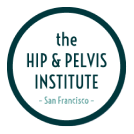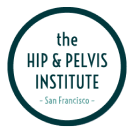What is the Periacetabular Osteotomy?
Periacetabular Osteotomy (PAO) is a surgical procedure developed to correct deficiencies of acetabular coverage by repositioning the acetabulum within the pelvis. It is most commonly employed to address developmental dysplasia of the hip in the skeletally mature individual.
Acetabular dysplasia or Developmental Dysplasia of the Hip is a relatively uncommon diagnosis. It is usually the result of problems with development of the hip joint occurring before birth or in early childhood.
The normal hip is a “ball and socket” type joint. In the case of developmental dysplasia of the hip, the “socket” grows and develops abnormally resulting in a shallow “dish shaped” cup. The resulting abnormalities of the hip lead to relative “uncovering” of the femoral head. This leads to abnormal stresses upon the cartilage of the hip. It may also contribute to deformities of the shape of the “ball” which can further contribute to the patient’s symptoms.
Individuals with acetabular dysplasia rarely know they have the diagnosis until these abnormal stresses lead to injury of the cartilage. In most cases they begin to develop symptoms in their hips in their early 20’s or 30’s. They present with groin or hip pain that prompts the initial medical evaluation. There may have been a history of having been treated for hip problems as an infant or child.
If left untreated, the abnormal stresses on the acetabulum lead rather predictably to additional damage within the hip. Commonly the acetabular labrum (the rim cartilage) begins to tear and cysts may form. As the damage progresses, the edge of the acetabular bone subjected to these stresses may fracture. These are usually rather painful events leading to the condition called “Acetabular Rim Syndrome”.
The diagnosis of dysplasia of the hip is usually rather straightforward at this point.
A plain X-ray of the pelvis is usually all that is required to reveal the abnormality of the hip. Further studies such as an MRI arthrogram may be helpful in staging the injury to cartilage and the other structures described above.
Without correction, this damage is cumulative and will destroy the hip joint. The arthritis is predictable and may progress rather rapidly. This leads to increasing pain, debility, loss of motion and worsening function of the hip. If the arthritis progresses, total hip replacement becomes the only option for salvage. Many times the hip replacement is technically challenging requiring bone graft or special implants to address the defects commonly found in dysplasia.
Periacetabular Osteotomy (PAO) is a surgical treatment for acetabular dysplasia that preserves and enhances the patient’s own hip rather than replacing it with an artificial joint. The goal of the procedure is to reorient the abnormal acetabulum into a more correct position so that it can bear loads more effectively.
How did I get interested in the PAO?
PAO is a procedure that was developed and first performed in 1984 in Bern, Switzerland by Professor Reinhold Ganz with the assistance of my father, Jeffrey Mast, M.D. My father had taken time away from his orthopedic practice to spend time in sabbatical to try to improve treatments for some of the more complex problems in orthopedic surgery.
My exposure to the PAO occurred early in my career. Much of my young career in medicine was spent assisting my father by being his “surgical scrub” during numerous cases performed in both Detroit, MI and Sparks, NV. During my residency training I spent time with Dr. Chris Peters and Dr. Peter Stevens in Salt Lake City who at the time were pioneering the American experience in hip preservation surgery.
A prerequisite for performing complex osteotomy around the hip was to spend some time in fellowship training learning techniques of acetabular fracture management. I followed my residency with a fellowship under Dr. Joel Matta, a world expert in hip and pelvis surgery. Upon completion of my fellowship, I spent very valuable time working with my father in private practice in Sparks, NV.
In 2009 I was selected by the AO North America to participate in an international hip preservation fellowship. I spent nine valuable months working under Dr. Frederic Laude, Dr. Michael Leunig and Dr. Reinhold Ganz. I returned home to San Francisco to begin my own practice in hip and pelvis surgery.
The procedure
A normal hip is a ball and socket type joint. The femoral head (the ball) and the acetabulum (the socket) are covered by hyaline cartilage that has a very low friction surface, allowing for free and painless motion. The hyaline cartilage surface has a lower friction coefficient than any man made bearing surface.
A normal acetabulum “covers” the upper (superior) portion of the head of the femur as well as a partial portion of the front (anterior) and back (posterior) of the femoral head. The hip with acetabular dysplasia is shallow or deficient in one or more of these regions.
The words “Periacetabular osteotomy” simply translate to cutting the bone around the acetabulum. The goal of the procedure then is to separate the acetabulum from the surrounding pelvis by a series of carefully controlled cuts and rotating it into a position of improved coverage. The PAO thereby reorients the socket to improve its position relative to the hip joint. Xrays are used liberally during the procedure to confirm appropriate positioning of the acetabulum prior to fixing it with screws.
Each case is unique in that there are varying requirements of rotation based upon the degree of dysplasia. In rare cases, an additional femoral osteotomy is required to achieve normalization of the hip anatomy. The PAO is very powerful in that it allows very large corrections to occur with very little deformity of the pelvis.
Details of the Hospitalization
As with any other major hip surgery, there is some risk of complications. Bleeding, Infection, nerve or blood vessel injury, Non-union (lack of healing), and malpositioning or fracture of the fragment are all possible. In Dr. Mast’s experience these have been rare, and the procedure overwhelmingly safe.
The usual hospital stay is 3 to 5 days and depends on how rapidly pain subsides and how the patient is progressing in physical therapy. After surgery, the patient will be monitored in either the recovery room or briefly in the ICU where nurses closely monitor them. X-rays will be taken the day after surgery for a final assessment of the result. The patient will then go to the Orthopedic ward where physical therapy begins.
Patients begin physical therapy while in the hospital improve hip motion and muscle function and to learn to use appropriate assistive devices such as crutches or a walker. The patient begins walking with crutches immediately, but weight bearing is restricted to 30 pounds on the operative side. Placing full weight on the operated side too early can cause the screws to bend or break and the osteotomy to lose its position. Too vigorous exercise such as resistive exercise against weights can also cause failure. If failure occurs, re-operation may be necessary and the chance of complications and arthritis increase.
A team of medical specialists will care for the patient after surgery. Included among the team’s post-surgical priorities are pain management, preventing infection, and the prevention of deep vein thrombosis (blood clots in large veins), and pulmonary embolus (blood clots traveling through veins to the lungs).
The patient will go home after medical stability and physical therapy criteria are met. Before returning home the patient will be provided prescriptions for pain medications and an anticoagulant. Some degree of pain after discharge is natural which may increase or decrease on different days but the general trend should be toward decreasing pain. Some patients may sense an occasional “click” or “pop” in or around the hip these are natural and generally subside as time progresses. Numbness and a tingling sensation is common around the incision area. Follow-up outpatient visits are necessary to monitor progress by X-ray and physical examination. The first follow-up visit is usually scheduled about 2 weeks after surgery and the second at 6 weeks.
Between 6 and 8 weeks after the surgery the patient is allowed to be full weight bearing and work toward discontinuing use of the crutches. The patient may begin working with outpatient physical therapy at this time. Progress in walking depends on return of muscle strength. The majority of patients are walking without support by 4 months after the surgery. Subsequent follow-up visits are at 3 months, I year and 2 years after surgery and then at 2 year intervals.
A minority of patients request removal of one or more screws that were used to fix the PAO and this can be performed as an outpatient procedure that does not interrupt a patient’s continued full function.

